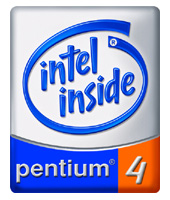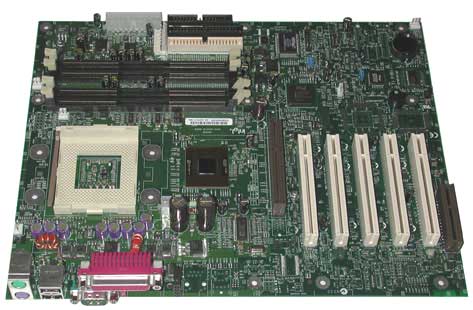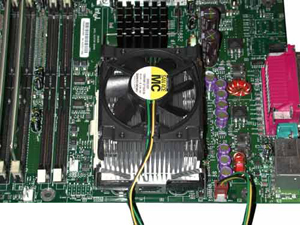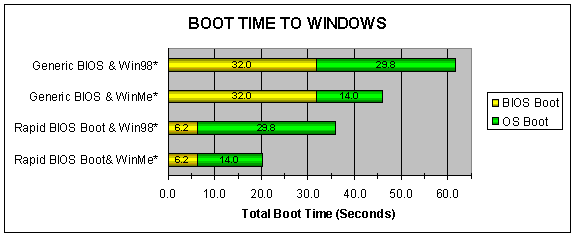
 |

|
| ActiveWin: Reviews | Active Network | New Reviews | Old Reviews | Interviews |Mailing List | Forums |
|
|
|
|
|
DirectX |
|
ActiveMac |
|
Downloads |
|
Forums |
|
Interviews |
|
News |
|
MS Games & Hardware |
|
Reviews |
|
Support Center |
|
Windows 2000 |
|
Windows Me |
|
Windows Server 2003 |
|
Windows Vista |
|
Windows XP |
|
|
|
|
|
|
|
News Centers |
|
Windows/Microsoft |
|
DVD |
|
Apple/Mac |
|
Xbox |
|
News Search |
|
|
|
|
|
|
|
ActiveXBox |
|
Xbox News |
|
Box Shots |
|
Inside The Xbox |
|
Released Titles |
|
Announced Titles |
|
Screenshots/Videos |
|
History Of The Xbox |
|
Links |
|
Forum |
|
FAQ |
|
|
|
|
|
|
|
Windows XP |
|
Introduction |
|
System Requirements |
|
Home Features |
|
Pro Features |
|
Upgrade Checklists |
|
History |
|
FAQ |
|
Links |
|
TopTechTips |
|
|
|
|
|
|
|
FAQ's |
|
Windows Vista |
|
Windows 98/98 SE |
|
Windows 2000 |
|
Windows Me |
|
Windows Server 2002 |
|
Windows "Whistler" XP |
|
Windows CE |
|
Internet Explorer 6 |
|
Internet Explorer 5 |
|
Xbox |
|
Xbox 360 |
|
DirectX |
|
DVD's |
|
|
|
|
|
|
|
TopTechTips |
|
Registry Tips |
|
Windows 95/98 |
|
Windows 2000 |
|
Internet Explorer 5 |
|
Program Tips |
|
Easter Eggs |
|
Hardware |
|
DVD |
|
|
|
|
|
|
|
ActiveDVD |
|
DVD News |
|
DVD Forum |
|
Glossary |
|
Tips |
|
Articles |
|
Reviews |
|
News Archive |
|
Links |
|
Drivers |
|
|
|
|
|
|
|
Latest Reviews |
|
Xbox/Games |
|
Fallout 3 |
|
|
|
Applications |
|
Windows Server 2008 R2 |
|
Windows 7 |
|
|
|
Hardware |
|
iPod Touch 32GB |
|
|
|
|
|
|
|
Latest Interviews |
|
Steve Ballmer |
|
Jim Allchin |
|
|
|
|
|
|
|
Site News/Info |
|
About This Site |
|
Affiliates |
|
Contact Us |
|
Default Home Page |
|
Link To Us |
|
Links |
|
News Archive |
|
Site Search |
|
Awards |
|
|
|
|
|
|
|
Credits |

Product:
Pentium 4 1.5GHz
Company: Intel
Website: http://www.intel.com
Estimated Street Price: $848.00
Review By:
Julien JAY
Intel D850GB MotherBoard
|
Table Of Contents |
Intel provided us with their
latest top-notch motherboard designed specifically for the Pentium 4. This
new motherboard named D850GB uses ATX form factor and is obviously powered
by the Intel i850 chipset. Like for Celeron and recent

Intel D850GB
MotherBoard
Like on previous Intel motherboards, the rear panel unveils a small DEL bar intended to let you know the actual status of the motherboard in case of problems - indicating them with a color code. Installing the D850GB in an existing PC box isn’t an easy thing since the Pentium 4 requires a new kind of PC box so you can screw the big heatsink part that’ll surround the CPU to a specially adapted metallic wall. The D850GB motherboard also requires an ATX 2.03 (ATX 12 Volts) 300 watts (300 watts are a minimum due to the power consumption of the CPU, the motherboard, etc.) compatible power supply. Hopefully since I'm handy (thanks to all the Legos i've build) I managed to install the motherboard in my existing PC box without changing it using the actual power supply. However we recommend every Pentium 4 owner to grab an adapted power supply unit with the two additional connectors that need to be plugged on the motherboard to avoid any potential problem. If your PC meets these requirements you can start installing the motherboard, right away. Inserting the Pentium 4 into the Socket 423 is a breeze and once you’re done you’ll have to apply a thermal paste to stick the heatsink over it, so the CPU heat will be dissipated and transmitted to the huge metallic heatsink itself covered by a wide and powerful fan. The whole system heats much than a normal PC, for instance the i850 chipset is even covered by an heatsink!

Intel Pentium 4
1.5GHz HeatSink module
Your PC box will have to be correctly cooled by numerous
fans (we used four inside our test system) to ensure the reliability of the
whole system: as you know the more a PC heats more you have chance to encounter
strange fatal errors due to overheating. As this time the i850 chipset only
supports RAMBUS memory so the motherboard features 4 RIMM slots to install your
RDRAM easily (note that if you use only two RDRAM barrettes continuity RIMM
modules are provided with the motherboard).
The good thing is that with four RIMM slots you have sufficient memory
upgrade possibilities
to extend computer memory up to 2GB
(Rambus PC600 barrettes are also supported).
We installed 384MB of Rambus PC800 ECC memory on the
motherboard before we plug the UDMA 100 controllers to the hard disks and DVD
ROM cables. Then we mount the PCI cards and we finished by inserting the AGP
graphic card using an AGP retention mechanism to avoid possible bad contact that
may be caused by a heavy AGP card. Due to the new AGP voltage used by the i850
chipset some 3D graphic cards like the Voodoo 5500 won’t work with the
motherboard since they only support 1.7 volts mode and not 1.5 volts. The Intel
D850GB comes with only two external mounted USB ports near the PS/2 plugs for
the mouse & the keyboard: to enjoy the advantages of the built-in support for
two others USB ports you’ll have to find an USB port connector extension card
that can be connected to the motherboard.
Curiously the D850GB motherboard comes with only one serial port which is really
rare since many users still use various serial devices:
this restriction is a bit petty. The usual parallel port
is also included and supports EPP mode for fast bi-directional communications.
Once we’ve plugged everything correctly we were able to start the computer.
First of all, we discover in front of our starring eyes a nice ‘Pentium 4’
screen that is displayed each time you power up the system thanks to the Intel
friendly BIOS message feature that hides every obscures POST messages.
Obviously the D850GB motherboard is almost jumperless, so your entire system
configuration will be automatically detected from your CPU speed, to the hard
disks you have. If ever the processor isn't correctly detected a simple jumper
setting on the motherboard will let you define the CPU speed enabling
overclocking. However remember that overclocking isn't recommended by Intel and
when overclocking a CPU you shouldn't overtake 15% of the original CPU frequency.
The
firmware of the motherboard is stored on the Intel 82802AB 4 MB Firmware Hub
component ensuring it can be updated. One really good thing is that the BIOS is
Multilanguage enabled so it can speak English as well as German! Updating it is
a child game since Intel provides an Express Bios Update that runs directly
under Windows:
after launching the express updater the computer will be rebooted and your Bios
will be updated in a few seconds. Just like the Intel VC820 motherboard, the D850GB features a new
unique technology named Intel Rapid Bios. This feature will surely interest
every user: in order to reduce long booting time, user frustration and to
increase the efficiency of

Like with every
motherboard release
that occurs after Windows was released, you’ll have to install the Intel INF chipset drivers update
so Windows can perfectly manage the motherboard you’ve just installed: it works
great under Windows Me as well as Windows 2000. Intel also provides
In terms of power management the Intel D850GB supports every current standard
like APM & ACPI and can enter in various hibernate states
(S3 is supported). Suspend to ram is also included so you can
shutdown your PC and when you'll attempt to relaunch it, you'll instantly find
back your Windows desktop with the applications that were running before you
suspend it. Your PC will behave that way like every consumer electronic
appliances with no long booting times, etc. The BIOS of the D850GB lets you
define the time before hard disks enter in low consumption mode, and you can
even enable Wake On Lan or Wake On Modem features to start your PC when a phone
call or a network call arrives.
Even if i'm not an 'overclocking'
fan, I tried to overclock the Pentium 4 1.5GHz which was feasible since the
Pentium 4 CPU I got was a confidential sample that isn't bridled. Though many of
Pentium 4 users won't be able to do so since production Pentium 4 processors
can't be overclocked except if they have a good motherboard. Using the Pentium 4 1.5 GHz along with the Intel D850GB
motherboard I managed to overclock it up to 1.7 GHz safely: at
this speed with the current system ventilation we didn't encounter any hangs or
unexpected freezes thanks to the heatsink that is already designed to dissipate
more heat than actually. But remember overclocking a processor isn't recommended
since it can severely damage it and
always void your warranty.
Technical Analysis
The Pentium 4 architecture
reveals a strong potential specifically designed for video, high-demanding
multimedia applications and rich 3D games. With so much powerful architecture
early adopters can see the future coming in all peace of mind. Pentium 4
processors also bring to reality speech recognition applications & encrypting
tools while fastening ripping processes by example. But that’s not all! Even
thought the Pentium 4 boosts every multimedia application it will also let
developers create software or games you can’t even dream about yet for example
more sophisticated artificial intelligence, and things like that. Intel will be
able to push the limits behind one more time just like the

Pentium 4
Gold Pegs
| <-- Intel i82850 chipset |
